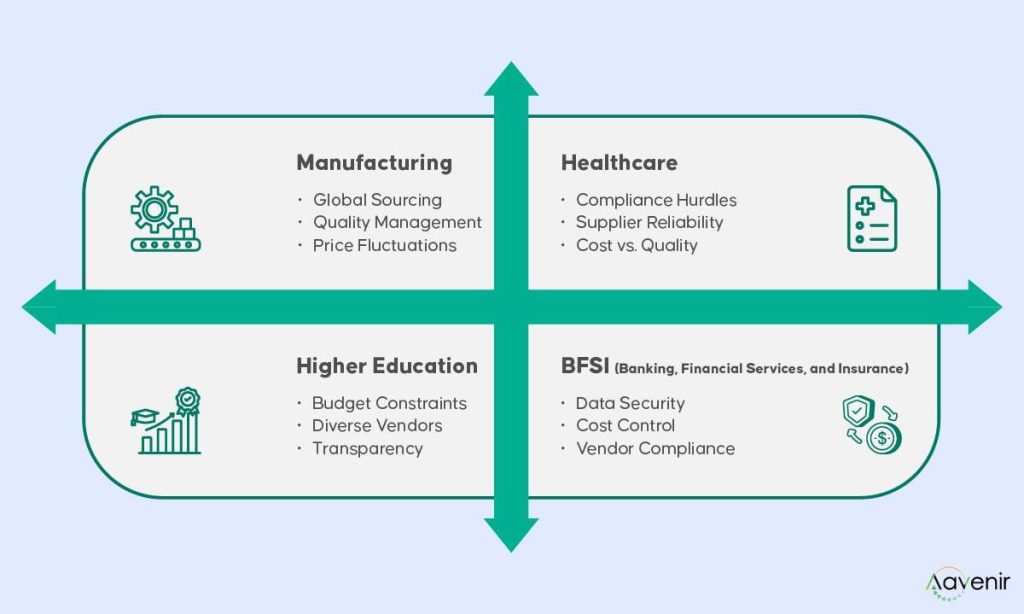Top Sourcing Challenges for Medical Device OEMs in 2025

The year is 2025. Holographic surgeons conduct remote operations, personalized prosthetics spring from 3D printers, and diagnostic wearables relay real-time health data. But behind this futuristic façade, medical device OEMs face a stark reality: a sourcing landscape riddled with complexity and constraint. Forget the gleaming chrome of futuristic labs; the true battleground of innovation lies in material procurement, ethical sourcing, and navigating an increasingly volatile global supply chain.
What shadows lurk in the corners of the medical device industry’s sourcing departments? Which obstacles will trip up even the most agile manufacturers? From navigating increasingly stringent regulations designed to combat counterfeit components, to securing rare earth elements powering cutting-edge technologies, the challenges are multiplying faster than new medical breakthroughs.
This article dives deep into the pain points poised to plague medical device OEMs in 2025. We’ll explore the shifting geopolitical landscapes, the emergent technologies disrupting traditional sourcing models, and the evolving demands of a hyper-connected world. Get ready to face the future, not in a operating room, but in the control room of your sourcing strategy.
Table of Contents
- Navigating Supplier Scarcity: Securing Critical Components in a Competitive Landscape
- The Evolving Regulatory Maze: Achieving Compliance amidst Global Uncertainty
- Beyond Cost: Building Resilient and Ethical Supply Chains for Future Success
- Q&A
- Final Thoughts

Navigating Supplier Scarcity: Securing Critical Components in a Competitive Landscape
In the ever-evolving realm of medical device manufacturing, Original Equipment Manufacturers (OEMs) are facing an increasingly critical hurdle: ensuring a consistent and reliable supply chain, especially when obtaining rare or specialized components.
The path to securing essential pieces becomes a complex dance of strategic foresight, relationship management, and adaptable planning. Several factors contribute to these challenges:
- Global Disruptions: Geopolitical events, natural disasters, and unforeseen crises can cripple supply chains overnight.
- Single-Source Reliance: Placing all bets on a single supplier leaves OEMs vulnerable to shutdowns and price hikes.
- Technological Advancements: The rapid pace of medical innovation demands consistent access to novel and specialized materials.
Overcoming these difficulties requires innovative approaches. Consider these strategies:
| Strategy | Benefit |
| Dual-Sourcing | Mitigates single-point failures. |
| Strategic Stockpiling | Buffers against short-term disruptions. |
| Supplier Diversification | Reduces dependence on specific regions. |
The Evolving Regulatory Maze: Achieving Compliance amidst Global Uncertainty
Navigating the global landscape of medical device regulations is becoming increasingly complex. For Original Equipment Manufacturers (OEMs), 2025 promises a continued tightening of standards, driven by a heightened focus on patient safety and data security. The challenge isn’t just meeting today’s regulations, but anticipating tomorrow’s. Successfully navigating this includes understanding evolving standards like MDR in Europe and increased scrutiny from the FDA in the US. Key to survival is proactive adaptation and a steadfast commitment to quality throughout the sourcing process.
Global uncertainty, stemming from geopolitical shifts and economic volatility, adds another layer of complexity. Supply chain disruptions, trade wars, and fluctuating currency rates can all impact a medical device OEM’s ability to source compliant materials and components on time and within budget. To mitigate these risks, consider implementing a multi-sourcing strategy and conducting thorough due diligence on all suppliers. For instance:
- Establish robust risk assessment protocols.
- Diversify your supply base to reduce reliance on single suppliers.
- Invest in advanced supply chain analytics to identify potential disruptions early on.
Ultimately, achieving compliance in 2025 requires a holistic approach that integrates regulatory awareness, supply chain resilience, and strategic sourcing. This means building strong relationships with suppliers who share your commitment to quality, investing in compliance training for your staff, and embracing new technologies to streamline your regulatory processes.
| Challenge Area | 2023 Impact | 2025 Expected Impact |
|---|---|---|
| Regulatory Updates | Moderate | High |
| Supply Chain Issues | High | Moderate to High |
| Cost Pressures | Moderate | High |
Beyond Cost: Building Resilient and Ethical Supply Chains for Future Success
The quest for robust supply chains is no longer just about shaving pennies. For Medical Device OEMs staring down 2025, the landscape is shifting. While cost remains a factor, the priorities are expanding to encompass resilience against disruptions, maintaining ethical sourcing standards, and fostering adaptability to regulatory changes. Meeting these demands requires a holistic approach that considers long-term value over short-term gains.
Building a resilient and ethical supply chain means proactively addressing potential vulnerabilities. This involves:
- Diversifying sourcing locations to mitigate geographic risks.
- Implementing rigorous due diligence to ensure ethical labor practices and environmental responsibility throughout the supply network.
- Adopting advanced forecasting techniques to anticipate material shortages and fluctuations in demand.
- Establishing strong partnerships with suppliers built on transparency and collaboration.
Investing in resilience and ethics isn’t just about risk mitigation; it’s about securing future success. Consider the potential downstream impacts of a compromised supply chain.
A proactive strategy can translate into improved brand reputation, enhanced customer loyalty, and a stronger competitive advantage. Here’s an example of key supplier evaluation criteria:
| Criteria | Metric | Target |
|---|---|---|
| Ethical Sourcing | Audit Score | >90% |
| Supply Availability | OTIF | >95% |
| Sustainability | Carbon Footprint | Reduced by 15% |
Q&A
Okay, here’s a creative and neutral Q&A-style piece focusing on the top sourcing challenges for medical device OEMs in 2025. It leans into a slightly futuristic feel without being overly sci-fi.
Title: Navigating the Med-Tech Supply Chain Labyrinth: A Glimpse into 2025’s Sourcing Trials
Intro:
The future of medicine is being shaped today. But for medical device Original Equipment Manufacturers (OEMs), innovation hinges on a robust and reliable supply chain. We sat down with Dr. Anya Sharma, a leading supply chain strategist specializing in the medical device industry, to discuss the hurdles OEMs are likely to face in sourcing materials and components by 2025.
Q&A:
Q: In 2025, what’s the most pressing sourcing issue keeping med-tech CEOs awake at night? Is it still cost?
Dr. Sharma: While cost remains a perennial concern, the real anxiety lies in predictability and resilience. Think beyond simple price tags. Consider the total cost of disruption. A single, delayed component can halt an entire production line, impacting patient care and brand reputation. In 2025, executives aren’t just asking “How much does it cost?” but “How reliably can we source it, and what’s our contingency plan if things go south due to geopolitical situations, climate change affecting raw material availability, or sudden demand spikes?”
Q: We’ve heard a lot about localized manufacturing and ‘near-shoring.’ Is this a viable solution, or just a passing fad?
Dr. Sharma: I wouldn’t call it a fad. The pandemic exposed the vulnerability of hyper-globalized supply chains. “Regionalization with optionality” is a better way to frame it. It’s not about bringing everything home, but diversifying your supplier base closer to key markets and building relationships with multiple reliable partners. This allows for faster response times, reduced shipping costs, and greater control over quality while hedging your bets against unforeseen events affecting any single region. The key is strategic redundancy, not just blanket reshoring.
Q: Material innovation is a major driver in medical device advancement. How will sourcing novel materials impact OEMs in the near future?
Dr. Sharma: The pursuit of biocompatible, sustainable, and high-performance materials like bio-plastics and advanced alloys presents a double-edged sword. On one hand, these innovations unlock groundbreaking device capabilities. On the other hand, sourcing them can be a nightmare. We’re talking limited suppliers, immature production processes, and stringent regulatory hurdles for each new batch of materials used. In 2025, OEMs will need dedicated teams focused on supplier development and early engagement with material scientists. They could also invest in smaller R&D companies with advanced knowledge, with a focus on scaling up new material production in their own facilities.
Q: Data security and provenance seem to be gaining momentum as concerns – what will sourcing strategies have to emphasize in that area?
Dr. Sharma: Traceability will be paramount. The rise of counterfeit components and concerns about data breaches in sensitive medical devices will forces OEMs to demand a much higher level of supply chain transparency. We’re talking about implementing blockchain technologies to meticulously track every component from origin to assembly. ‘Digital Trust’ will be a key differentiator. Suppliers who can prove the authenticity and security of their processes will gain a significant competitive advantage in 2025. Moreover, cyber-security measures must be embedded from the very first step of the supply chain.
Q: What’s one piece of actionable advice you’d give to a medical device OEM looking to future-proof its sourcing strategy?
Dr. Sharma: Embrace collaboration; it’s no longer optional but a necessity. Focus heavily on cultivating strategic partnerships, not just transactional relationships. Forge strong collaborative ties with key suppliers, material science labs, and even other OEMs (where appropriate) to share knowledge, mitigate risks, and collectively build a more resilient and innovative supply chain. Those who build bridges instead of walls will win in 2025 and beyond.
Closing:
The sourcing landscape for medical device OEMs in 2025 will be challenging, complex, and critical to navigating the evolving medical world. However, by proactively addressing these challenges and embracing new strategies, OEMs can not only survive but thrive in the years to come.
Final Thoughts
So, as we navigate the ever-shifting currents of 2025, the challenges facing medical device OEMs are undoubtedly complex, multifaceted, and, let’s be honest, a little daunting. From navigating the choppy waters of regulatory compliance to charting a course through supply chain storms, the pressure to innovate responsibly and efficiently remains relentless.
But fear not! For within every challenge lies an opportunity. Those OEMs who embrace agile strategies, prioritize robust partnerships, and leverage the power of forward-thinking technology will not only weather the storm, but emerge stronger and more resilient. The future of medical device manufacturing hinges on adaptability, collaboration, and a willingness to continuously learn and evolve. The year 2025 may be the horizon, but the journey towards a healthier future starts now. Let’s build it, together.

